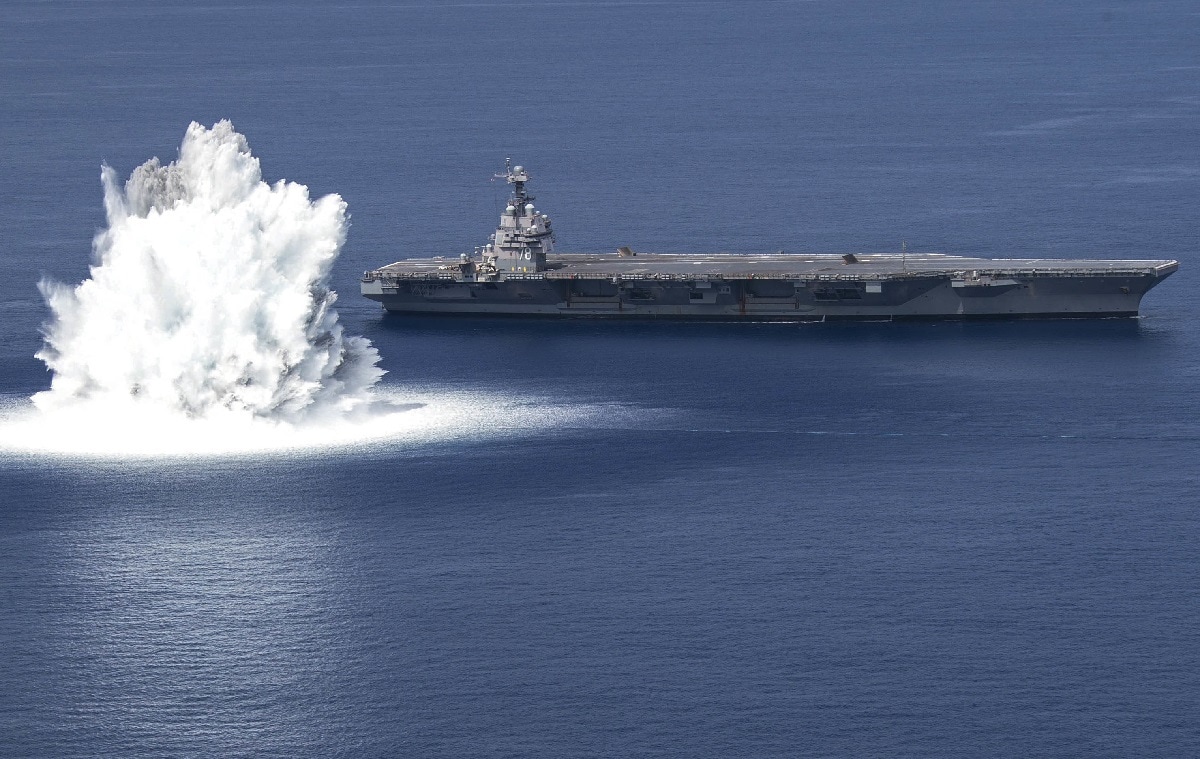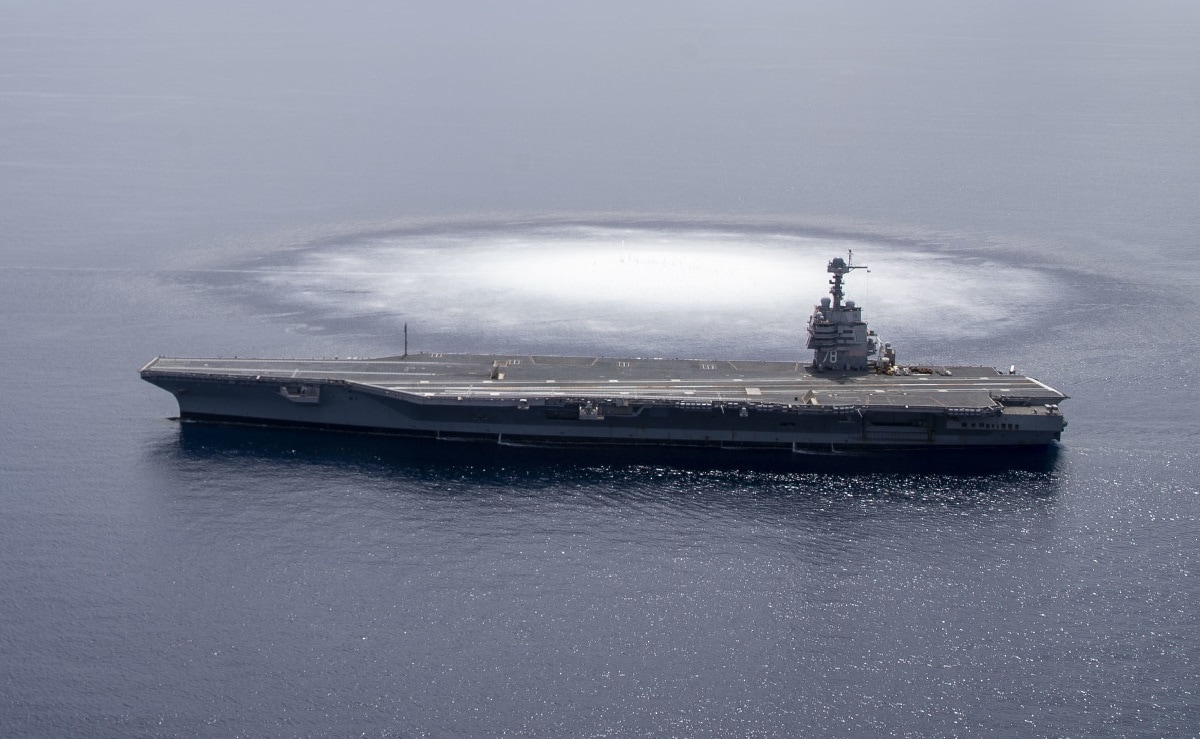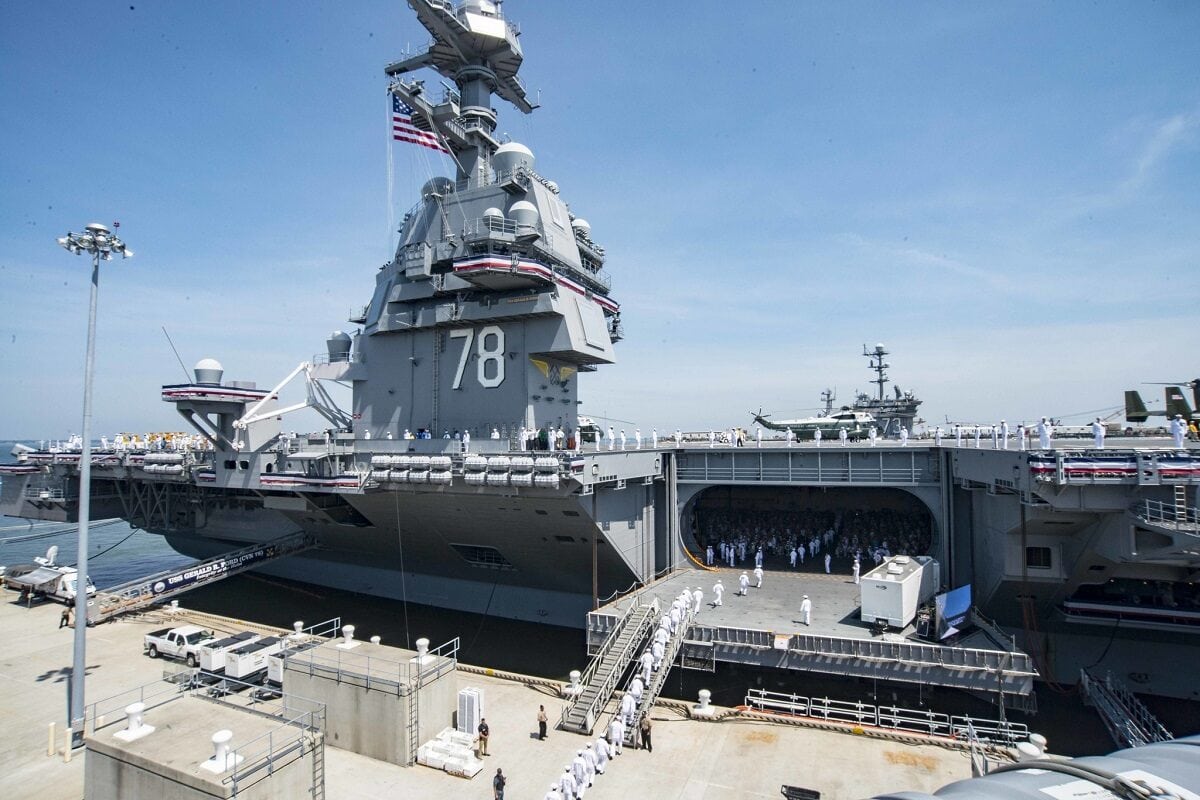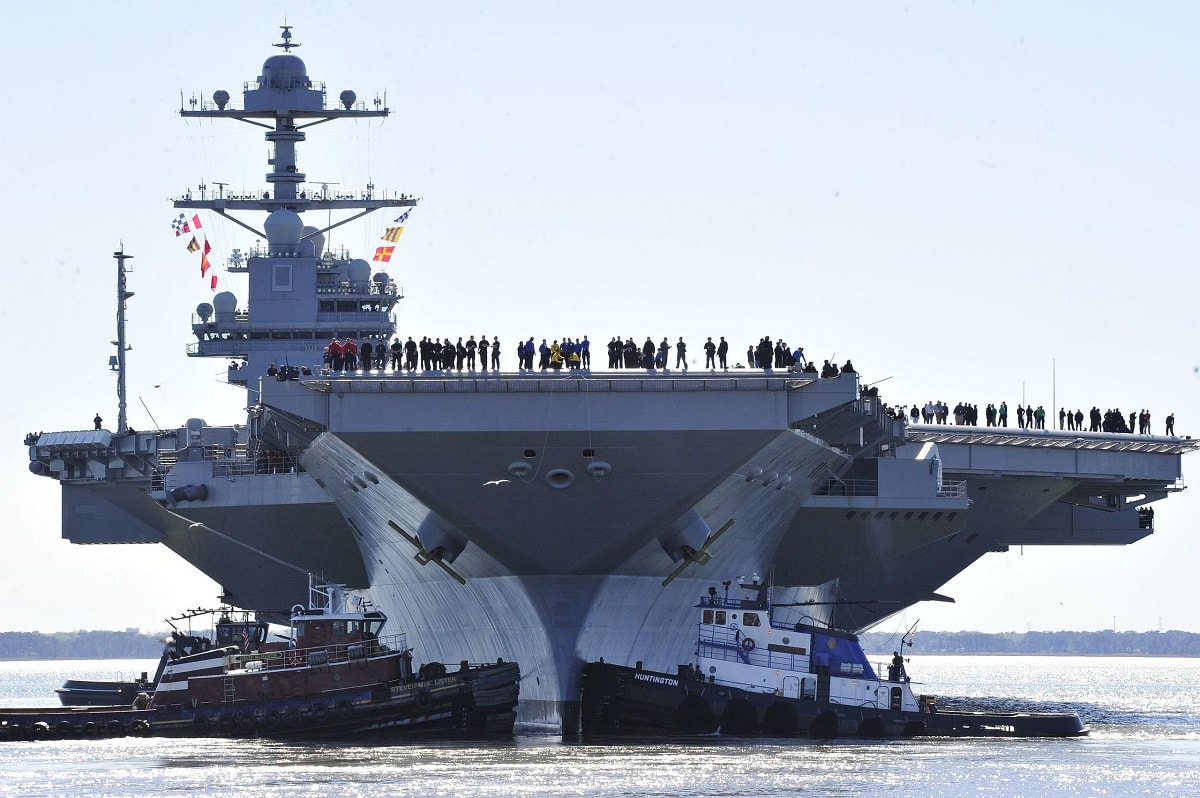It’s expensive and has been running late, but the USS Gerald R. Ford is one robust carrier. The Ford was commissioned in 2017 and is almost ready for its first official deployment. It is the lead ship in the Ford-class that will replace the Nimitz-class carriers one-for-one in the coming years.
The USS John F. Kennedy, also a Ford-class, is slated to be delivered to the navy in 2024. It is in U.S. code that the navy is required to keep 11 carriers in its fleet at all times. So, it is imperative that the Gerald R. Ford conducts its first scheduled patrol this year.
Some Presidents Know the Navy Well
Another president, Teddy Roosevelt, once said, “A good navy is not a provocation to war. It is the surest guaranty of peace.” The Ford-class is one way to project power and carry a big stick.
More Sorties With Fewer Sailors
The Ford-class keeps the basic Nimitz-class hull form yet has numerous improvements over the earlier carriers. It can fly more sorties per day, require fewer crew members to save money on personnel expenses, and lessen the need for more operating and support costs. This should reduce total expenditures for each Ford-class ship by $4 billion during each lifecycle.
It Needed a Break
The Gerald R. Ford finally completed a six-month “modernization and maintenance” period at Huntington Ingalls Industries-Newport News Shipbuilding in Virginia in March. Workers updated the galley and improved command-and-control spaces.
Ford-Class: More Tests and Training
The carrier is now at its home port in Naval Station Norfolk undergoing a final training and certification program. In 2021, the Ford went through critical shock trials when 40,000 pounds of explosives were set off near the carrier. It passed that stage with flying colors.
Is It Ready Yet?
But this sequence of events has been delayed for years. The original deployment for the Gerald R. Ford was supposed to be in 2018. It is also a $13 billion ship with “five thousand shipbuilders in Newport News and thousands of suppliers across the United States,” so the clock has been ticking to get it fully ready to lead a strike group. Navy brass said “everything is on track” as far back as last autumn.
The Gerald R. Ford Is Mammoth
The Ford’s capabilities should be worth the wait as it is one primo ship. It is 1,092 feet in length and has a beam of 134 feet while the flight deck is 256 feet wide. The Ford displaces 100,000 tons. Two nuclear reactors with four shafts put out a speed of 30 knots.

The aircraft carrier USS Gerald R. Ford (CVN 78) completes the first scheduled explosive event of Full Ship Shock Trials while underway in the Atlantic Ocean, June 18, 2021. The U.S. Navy conducts shock trials of new ship designs using live explosives to confirm that our warships can continue to meet demanding mission requirements under harsh conditions they might encounter in battle.

The aircraft carrier USS Gerald R. Ford (CVN 78) completes the first scheduled explosive event of Full Ship Shock Trials while underway in the Atlantic Ocean, June 18, 2021. The U.S. Navy conducts shock trials of new ship designs using live explosives to confirm that our warships can continue to meet demanding mission requirements under harsh conditions they might encounter in battle. (U.S. Navy photo by Mass Communication Specialist 3rd Class Riley B. McDowell)
Ford-Class: New Launch and Arresting System
Instead of a steam-launched catapult, the Ford will have a newfangled Electromagnetic Aircraft Launch System and advanced arresting gear. This is better to send aircraft of different sizes and weights into the air. It will take fewer sailors to run the system and should have a lower number of maintenance issues.
Great Air Group and Protection
The Ford will have a full complement of F-35C Lightning IIs, F/A-18E/F Super Hornets, E-2D Advanced Hawkeyes, and EA-18G Growler electronic warfare airplanes. These airplanes can fly 160 sorties a day or surge to over 200 sorties a day during combat.
For protection and survivability, there are Sea Sparrow medium-range surface-to-air missiles and a Phalanx close-in-weapon system.

NORFOLK (July 22, 2017) Sailors man the rails of the aircraft carrier USS Gerald R. Ford (CVN 78) during its commissioning ceremony at Naval Station Norfolk, Va. Ford is the lead ship of the Ford-class aircraft carriers, and the first new U.S. aircraft carrier designed in 40 years. (U.S. Navy photo by Mass Communication Specialist 2nd Class Andrew J. Sneeringer/Released)
Ford-Class: Stand and Deliver
The entire Department of Defense is likely aware that the Gerald R. Ford has endured its share of delays and cost projections gone wild. Though $13 billion is a high price for one ship. The question is: can it deliver on all the new technologies – over 20 new systemic upgrades with innovations? Were there just too many bells and whistles to bring it in on time? That will be up to the postmortem reports from the General Accountability Office and the Congressional Research Service to point out lessons learned from the long procurement period that will hopefully help other carriers in the Ford-class make it to fruition on time and under budget.
Now serving as 1945’s Defense and National Security Editor, Brent M. Eastwood, PhD, is the author of Humans, Machines, and Data: Future Trends in Warfare. He is an Emerging Threats expert and former U.S. Army Infantry officer. You can follow him on Twitter @BMEastwood.

